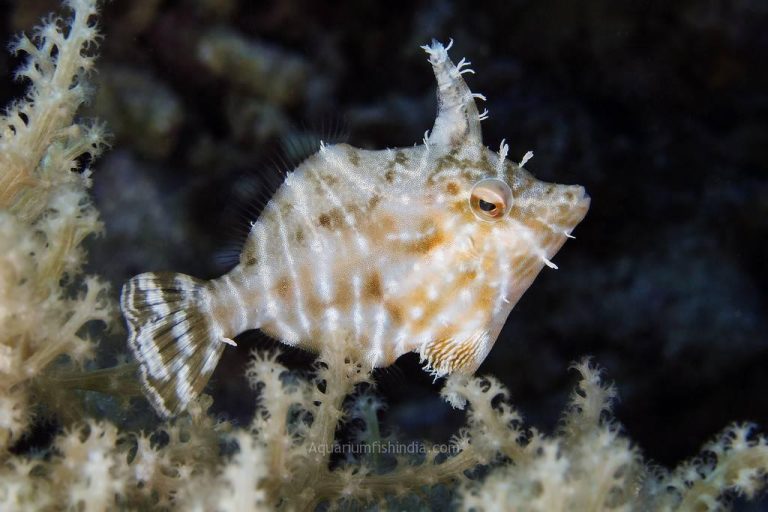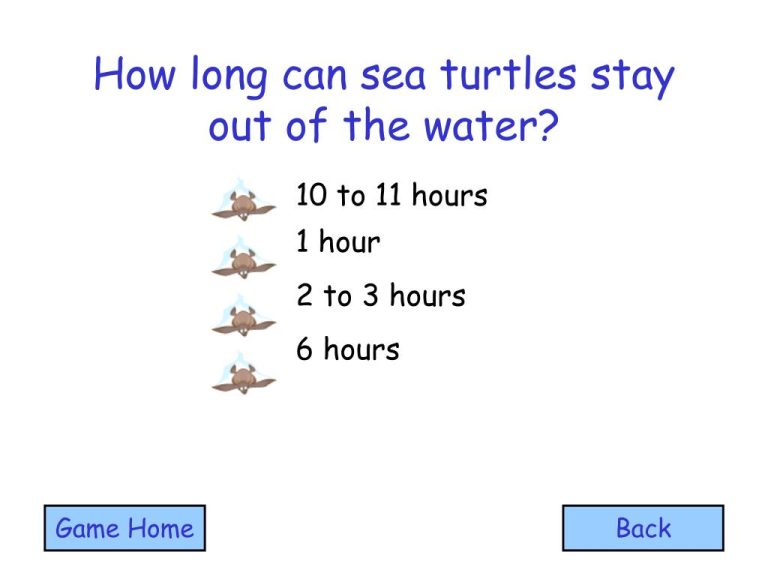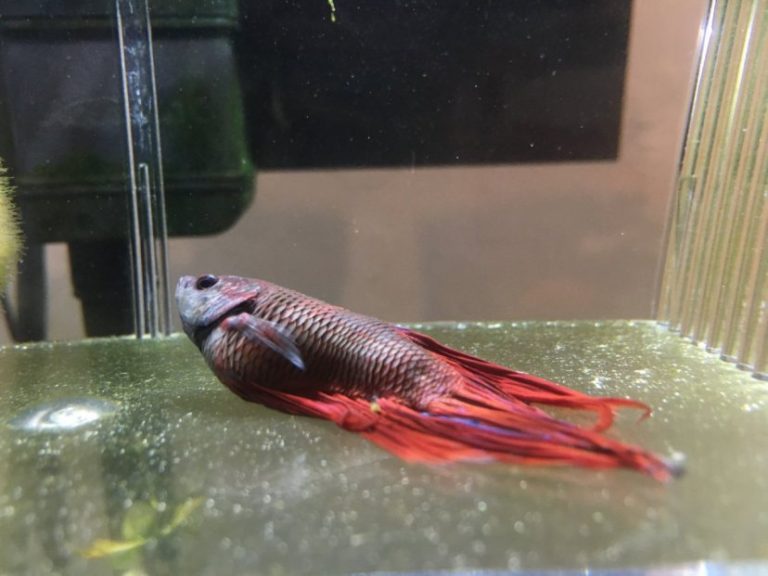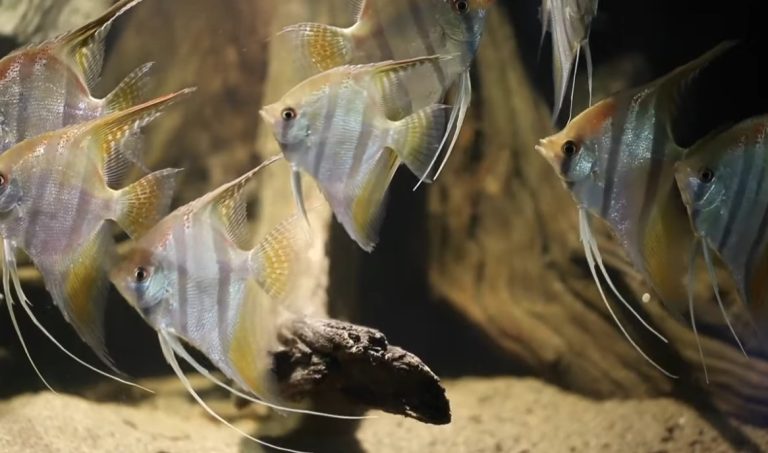Pea Puffer Puffed Up : Unmasking the Hidden Secrets of Their Behavior
Pea puffers puff up to assert dominance or when they feel threatened. Their aggression is often displayed by puffing up their bodies, making them appear larger.
Pea puffer fish, also known as dwarf puffers or pygmy puffers, are small freshwater fish native to south asia. These tiny fish are popular among aquatic hobbyists for their vibrant colors and quirky personalities. However, one behavior that can be concerning for owners is when their pea puffer puffs up.
When a pea puffer puffs up, it is a sign of either aggression or fear. Puffing up allows the fish to appear larger and more intimidating to potential threats or rivals. It is a form of assertiveness and dominance. This behavior is most commonly observed in males during territorial disputes or when courting a female. On the other hand, pea puffers may also puff up when they feel stressed or scared. In this case, their puffed-up state is a defensive mechanism to make themselves appear less appealing to predators. It is important to note that pea puffers are generally peaceful with other fish species, but they have a reputation for being feisty and territorial among their own kind. It is advisable to provide plenty of hiding spots and space in the aquarium to reduce conflicts and allow each fish to establish its territory. Pea puffers may puff up as a display of dominance or when they feel threatened. Understanding this behavior can help owners create a suitable environment that promotes the well-being of these unique and fascinating fish.

Credit: issuu.com
Understanding The Puffer’S Defensive Mechanism
Pea puffers are small freshwater fish known for their unique ability to puff themselves up when threatened. This defensive mechanism serves as a means of protection against predators and allows them to intimidate potential threats. In this section, we will delve into the fascinating details of how and why pea puffers puff up, the physiological changes that occur during this process, and the body language cues that indicate a puffed up pea puffer.
How And Why Do Pea Puffers Puff Up?
- The pea puffer’s ability to puff up is attributed to its highly elastic stomach, which expands rapidly when filled with water or air. This expansion causes the fish to swell up and appear larger than its actual size.
- When a pea puffer feels threatened or cornered, it instinctively puffs up as a response to potential danger. By expanding its body, it hopes to deter predators by appearing intimidating or unappetizing.
- Pufferfish, including the pea puffer, rely on their unique defense mechanism to ward off predators that may attempt to prey on them in their natural habitats.
The Physiological Changes That Occur When A Pea Puffer Puffs Up
- Puffing up requires the pea puffer to take in large amounts of water or air, which causes its stomach to expand. This expansion puts pressure on its internal organs, including the liver and intestines.
- As the pea puffer puffs up, its skin stretches to accommodate the increased volume. This stretching can reveal intricate patterns and markings on the fish’s body, adding to its visual deterrent effect.
- Puffing up also triggers a release of toxins from specialized glands present in the pea puffer’s skin. These toxins can be harmful or even deadly to potential predators, further enhancing the fish’s defense mechanism.
Analyzing The Body Language Of A Puffed Up Pea Puffer
- A puffed up pea puffer has several distinctive body language cues that indicate its defensive state. These cues can vary depending on the individual fish, but some common indications include:
- Expanded body size, often appearing round or balloon-like.
- Erected spines along its back, which can make the fish seem more formidable and less palatable.
- Tensed and stiffened fins, creating a rigid appearance.
- These visual cues, combined with the pea puffer’s overall inflated appearance, send a clear message to any potential predators: “i am not an easy target, and you might want to think twice about approaching me.”
The Evolutionary Advantages Of The Puffer’S Defense Mechanism
- The ability to puff up provides several evolutionary advantages for pea puffers and other pufferfish species. Some of these benefits include:
- Increased chances of survival: By puffing up, pea puffers can effectively deter or discourage many predators, providing them with a higher likelihood of survival in their natural habitats.
- Mimicking poisonous or venomous species: The toxic compounds present in a puffed up pea puffer’s skin can mimic those found in highly venomous or poisonous fish species. This similarity can deceive potential predators into thinking the puffer is dangerous, giving it an advantage.
- Streamlined escape: Puffing up allows pea puffers to make a quick escape by propelling themselves away from danger. Their rounded body shape and expanded size make them less likely to be swallowed by predators.
Understanding the mechanics behind the pea puffer’s defensive mechanism sheds light on the fascinating adaptation strategies that have allowed these tiny fish to survive and thrive in their aquatic environments. Whether they puff up to intimidate adversaries or mimic hazardous species, pea puffers have mastered the art of self-preservation through their unique defense mechanism.
The Relationship Between Stress And Puffing Up
Stress in pea puffers can often lead to a concerning behavior known as puffing up. When a pufferfish puffs up, it inflates its body by taking in water or air. This defensive mechanism is a sign that your puffer is experiencing some level of distress.
Understanding the triggers for this behavior and taking steps to reduce stress is crucial for the overall health and well-being of your fish.
Identifying The Triggers That Cause A Puffer To Puff Up
Identifying the triggers that cause a puffer to puff up is the first step in effectively managing stress. Here are some common triggers to watch out for:
- Aggression from tankmates: Pea puffers are territorial by nature, and aggression from other fish in the tank can stress them out.
- Poor water conditions: Water parameters such as temperature, ph, and ammonia levels must be closely monitored and maintained within the appropriate range.
- Insufficient hiding spots: Lack of adequate hiding spots can make puffers feel exposed and vulnerable, leading to stress and puffing up.
- Rapid movements or sudden changes in the surroundings: Puffers are sensitive creatures, and sudden movements or changes in their environment can startle and stress them.
By identifying these triggers and taking proactive steps to minimize their impact, you can help keep your pea puffer relaxed and happy.
Tips For Reducing Stress In Pea Puffers To Prevent Puffing Up
Keeping your pea puffers stress-free is essential for their health. Here are some tips to reduce stress and prevent puffing up:
- Provide plenty of hiding spots: Adding plants, caves, and other hiding spots in the aquarium will give your pufferfish a sense of security and reduce stress.
- Maintain stable water conditions: Regularly test the water parameters and perform necessary water changes to ensure optimal water quality.
- Avoid overcrowding: Pea puffers prefer to have their personal space. Avoid overcrowding the tank and provide enough space for each fish to establish its territory.
- Offer a varied diet: A diverse diet consisting of live or frozen foods, such as bloodworms and brine shrimp, will not only keep your puffer healthy but also eliminate the stress of constantly seeking food.
By following these tips, you can create a peaceful and stress-free environment for your pea puffers.
The Role Of A Comfortable Environment In Keeping Puffers Relaxed
A comfortable environment plays a critical role in keeping puffers relaxed and stress-free. Here’s why:
- Reduced territorial disputes: Providing ample hiding spots and space allows each puffer to establish its territory, reducing the likelihood of aggressive encounters.
- Mimicking their natural habitat: By recreating a tank environment that closely resembles their natural habitat, you can help puffers feel more comfortable and secure.
- Controlling external stimuli: Minimizing sudden movements, loud noises, and excessive lighting can help reduce stress and create a calm environment.
By creating a comfortable and safe space for your pea puffers, you can minimize stress levels and promote their overall well-being.
Why It’S Important To Minimize Stress For The Overall Health And Well-Being Of The Fish
Minimizing stress is crucial for the overall health and well-being of pea puffers. Here’s why stress reduction should be a top priority:
- Preventing health issues: Puffing up is just one visible sign of stress, but prolonged stress can lead to various health problems in pufferfish, including weakened immune systems and susceptibility to diseases.
- Promoting natural behaviors: When stress levels are low, puffers can engage in natural behaviors such as exploring, hunting, and interacting with their environment.
- Enhancing lifespan: Stress-free puffers are more likely to live longer and thrive in their aquarium habitat.
By prioritizing stress reduction, you can ensure your pea puffers lead happy and healthy lives.
Remember, a relaxed and stress-free puffer is a happy puffer. Understanding the triggers for puffing up, implementing stress reduction strategies, and providing a comfortable environment are key steps in promoting the well-being of your fish.
The Social Dynamics Of Puffed Up Pea Puffers
Pea puffers, with their captivating personalities and unique behavior, are a delight to observe in any aquarium. One fascinating behavior they exhibit is puffing up, where they inflate themselves to intimidate others or defend their territories. But what impact does this puffed up state have on their social dynamics?
In this section, we will explore the various aspects of pea puffer interactions, from the impact of puffing up on interactions with tank mates to understanding their hierarchy within a group.
The Impact Of Puffing Up On Interactions With Tank Mates:
- Puffing up is a visual display of aggression, often used by pea puffers to establish dominance or ward off potential threats.
- When puffed up, pea puffers appear larger and more imposing, deterring other fish from challenging their authority.
- Puffing up can lead to increased aggression among tank mates, as they perceive the puffer as a threat.
- Some tank mates may become submissive or avoid the puffed up puffer altogether, creating a distinct social dynamic within the aquarium.
Understanding The Hierarchy Within A Group Of Pea Puffers:
- Pea puffers form complex social hierarchies, with individuals vying for dominance and establishing their rank within the group.
- The puffer that successfully puffs up and displays dominance will often become the alpha, maintaining control over the others.
- Lower-ranking pea puffers may display submissive behaviors such as retreating, avoiding eye contact, or shrinking in size when faced with the alpha puffer’s aggression.
Strategies To Handle Conflicts And Aggression Among Puffed Up Puffers:
- Providing ample hiding spots, such as caves or plants, can help reduce aggression by offering refuge for submissive or bullied puffers.
- Increasing the overall space in the aquarium can help minimize territorial disputes and provide opportunities for less dominant puffers to establish their territories.
- Introducing tank mates with similar aggression levels and compatible social behaviors can help create a more harmonious environment for puffed up pea puffers.
The Social Intelligence Of Pea Puffers And How It Influences Their Behavior:
- Pea puffers exhibit remarkable social intelligence, recognizing individual tank mates and remembering their interactions over time.
- They can learn from previous conflicts and alter their behavior accordingly, adapting their social interactions and hierarchy as necessary.
- This social intelligence allows for the development of complex social structures within a group of puffed up pea puffers.
Pea puffers, while small in size, are not to be underestimated when it comes to their social dynamics. Their ability to puff up and display dominance, the establishment of hierarchies, and their social intelligence all contribute to their intriguing behavior.
Understanding these aspects not only enhances our appreciation for these charming aquatic creatures but also helps create a harmonious environment in our aquariums.
Frequently Asked Questions For Pea Puffer Puffed Up
1.Why Is My Pea Puffer Puffed Up?
Pea puffers puff up to appear larger when threatened or stressed, it’s a defense mechanism.
2.Is Puffed Up Pea Puffer A Sign Of Illness?
A puffed up pea puffer can indicate stress or illness, monitor closely and consult a veterinarian if necessary.
3.How Can I Help My Pea Puffer If It’S Puffed Up?
Ensure water parameters are suitable, provide hiding spots, reduce stressors, and maintain a balanced diet for a healthy pea puffer.
Conclusion
Keeping pea puffers as pets can be both rewarding and challenging. These small but feisty creatures bring a unique charm to an aquarium setting. Their ability to inflate and display vibrant colors are fascinating to observe. However, it is important to provide them with a suitable environment that replicates their natural habitat and suits their specific needs.
Regular water quality checks, proper nutrition, and careful tank mates selection are key factors in their care. Interacting with pea puffers requires a gentle touch and patience as they can be sensitive and easily stressed. With proper care and attention, pea puffers can thrive and provide endless entertainment for aquarium enthusiasts.
So, if you’re up for the challenge, the pea puffer could be the perfect pet to add liveliness and character to your underwater world. Keep exploring the fascinating world of pea puffers and embrace the joy they bring!






